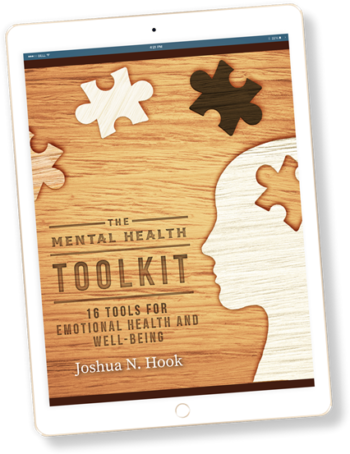When Adversity Hits, Staying Calm is a Superpower
January 28, 2019
Categories: Stress
I recently saw the movie Vice, which chronicles the political life of former Vice President Dick Cheney. What struck me the most about the film was Cheney’s ability to remain remarkably calm in the face of adversity.
Heart Attack
One scene stood out to me. Cheney is at an election event, and he has a heart attack. But you wouldn’t know it, based on Cheney’s emotional reaction (basically no reaction). Cheney simply tells the people next to him to take him to the hospital, and apologizes for breaking up the party.
The 4 C’s
The same thing happened over and over again throughout the movie. Adversity would hit (e.g., Watergate, 9/11, etc.) and everyone would start to freak out. But not Cheney. He epitomized the 4 C’s. He was cool, calm, collected, and calculated.
Now, you may not agree with any of Dick Cheney’s actions. That’s fine. This post isn’t about politics. It’s about the ability to remain calm in the face of adversity.
Most of us aren’t like this. When the storms of life hit, we react emotionally to what happened. We feel the need to do something or respond immediately to reduce our anxiety and fear. The problem is that when we respond in this way, we aren’t usually effective. We might do something that isn’t in our best interests.
3 Ways to Respond Effectively to Adversity
How can we remain cool, calm, collected, and calculated in the face of adversity? Here are 3 steps:
1. Don’t Respond Right Away
When we are agitated or triggered, it’s tough to respond effectively. This is true for almost anyone. So, make it a rule to not respond right away in the heat of the moment. Give yourself a grace period so you can have time to think things over. Don’t respond to email right away—give it 24 hours. Make it a rule to talk over any commitment someone asks of you with your spouse or advisory team. Don’t get pressured into doing something that isn’t in your best interests. Take a break if you need to—tell the other person you need to finish the discussion or negotiation later.
2. Develop Emotion Regulation Strategies.
In the moment, when we get triggered, sometimes it’s not easy to delay the conversation or take a break. In these situations, it’s important to have some go-to emotion regulation strategies to calm yourself down in the moment. Here are 2 strategies to try:
- Control your breathing. When we get triggered, our breathing and heart rate speeds up. It can be hard to think straight when our body is amped up. To counteract this, slow down your breathing. Try taking deep breaths—3 seconds in, 3 second hold, and 3 seconds out. Slow down your breathing; slow down your body.
- Ground yourself. Sometimes when we get amped up, our thoughts start swirling around in our head and we lose focus. To counteract this, ground yourself. Focus on your feet planted firmly on the ground. Focus on the feeling of your butt in the chair, and your arms against the armrests. You’re right here, in this room, and you aren’t going anywhere.
3. Speak Less; Listen More
Many of our problems come when we say something in the heat of the moment. Not as many problems happen when we are quiet and listening. So, when in doubt, speak less and listen more. Control your tongue—just don’t say that thing that popped into your head. Instead, tune in to what the other person is saying or thinking. You don’t have to respond or react to everything they say. Listening also buys you time to calculate what your next move should be.
Discussion
What happens when the storms of life hit and you face adversity? Do you lose your cool and freak out? Or are you able to respond in a way that is cool, calm, collected, and calculated? What helps you stay calm in the face of adversity?

Related Thoughts
No Comments
Leave A Comment

Subscribe To My Newsletter
Join my mailing list to receive the latest blog posts.
Receive my e-book “The Mental Health Toolkit” for free when you subscribe.






Good Read! Thanks Brother